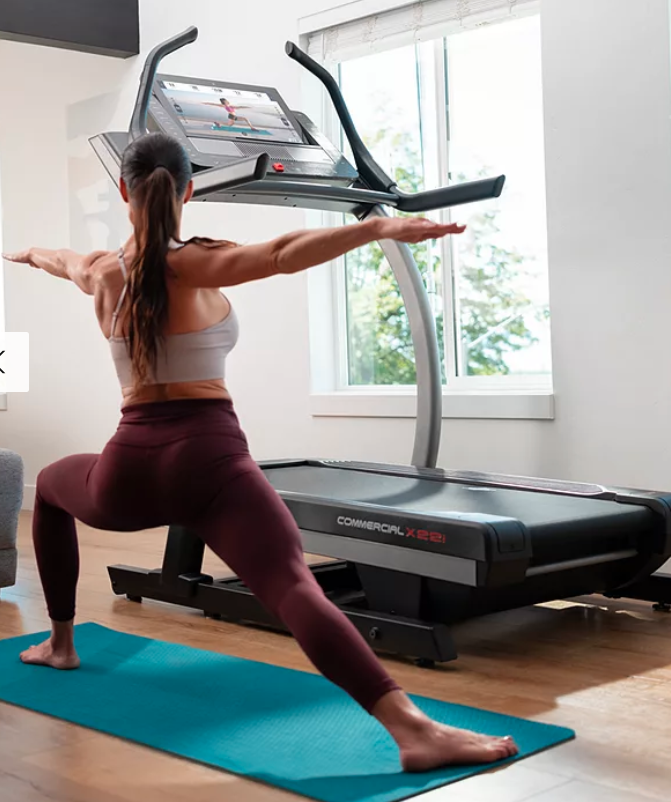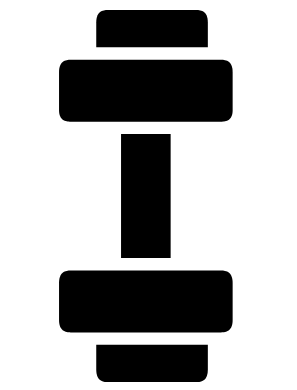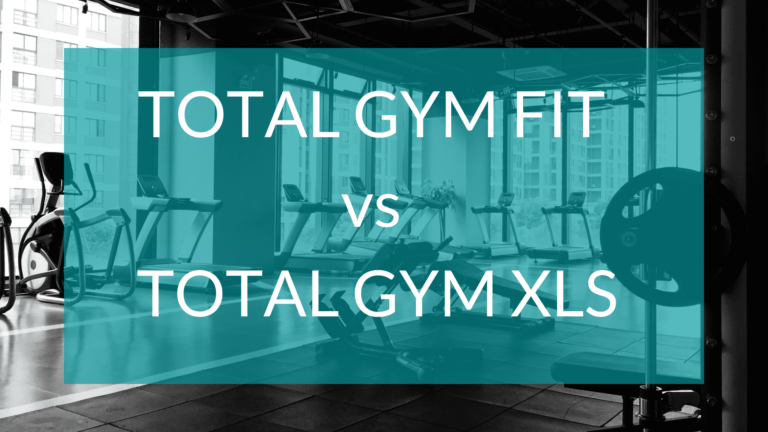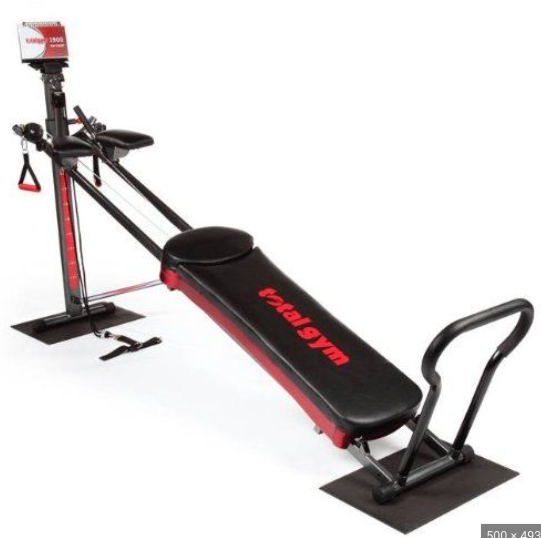Creating Your Ultimate Home Gym: A Step-by-Step Guide
In recent years, the concept of a home gym has gained a lot of popularity.
With busy schedules and the increasing need for flexibility, having a gym within the comfort of your own home has become a lifestyle choice for many people.
This guide will walk you through the process of building your own home gym, from assessing space and budget to defining your fitness goals.

Assessing Your Space and Budget Choosing the Ideal Location
Selecting the right location for your home gym is crucial.
It should be a space that you feel comfortable in and can dedicate solely to your workouts (ideally).
Spare rooms, garages, and even corners of living spaces can be transformed into effective workout zones.
But, the thing is, you have to work with what you have and make the most of whatever available space you have.
Maybe you don’t have any space that you can dedicate to exercise all the time.
This isn’t a problem!
Sure, you won’t want to go out and get a functional trainer and build it in your kitchen!
But there are plenty of things you can get that fold away or don’t take up too much space in the first place. Things like a Total Gym can fold away under your bed, and you can even get treadmills that will fit under a bed or couch.
Measuring Available Space
Take accurate measurements of the chosen area. This step will help you choose the appropriate workout equipment and plan the layout effectively.
Remember to consider ceiling height, as certain exercises may require more overhead space.
Setting a Budget and Sticking to It
Before you start shopping for equipment, set a clear budget.
Home gyms can be built on various budgets, so establishing spending limits will guide your purchasing decisions.
If you have a good budget there are some amazing exercise machines available. You might like to get a really expensive treadmill or one of the best rowing machines or enjoy cycling with amazing streamed content on a huge screen.
This is the dream, but for many, it makes sense to start with more affordable equipment so you might like to check out my guide to the best budget treadmills and the best rowing machines you can get under $500. It’s possible to build a great home gym on a budget.
Of course, you don’t have to get all the equipment at once, most people build up their home gyms over time adding more machines as their exercise regime develops.
Defining Your Fitness Goals Identifying Your Fitness Objectives
Begin by defining your fitness goals.
Are you aiming for weight loss, muscle gain, improved cardiovascular health, or overall fitness? Your objectives will influence the type of equipment you need and the training methods you’ll employ.
Selecting Appropriate Equipment Based on Goals
Different fitness goals require specific equipment. For example, if your goal is to build muscle, investing in weights and resistance equipment is crucial.
If you’re focusing on cardiovascular health, cardio machines like treadmills or stationary bikes are essential.
Balancing Cardiovascular, Strength, and Flexibility Training
A well-rounded fitness routine encompasses cardio, strength, and flexibility training.
Ensure your home gym has equipment or space for each of these components to create a balanced workout regimen.

Essential Equipment
Cardiovascular Equipment
Treadmills, stationary bikes, and ellipticals are popular choices for cardiovascular workouts.
Consider factors like available space, noise level, and the variety of workouts each machine offers when making your decision.
Strength Training Equipment
Home multi-gyms, Dumbbells, barbells, kettlebells, and resistance bands are effective for strength training. Opt for adjustable dumbbells to save space and allow for progression as your strength improves.
Flexibility and Recovery Tools
Flexibility and recovery are often overlooked but are crucial for preventing injuries. Include yoga mats, foam rollers, and resistance bands in your setup to aid in stretching and recovery.
Essential Equipment Selection
Equipping your home gym with the right tools is pivotal in creating a well-rounded workout space that caters to your fitness needs.
From cardiovascular workouts to strength training and flexibility exercises, let’s explore a diverse range of gym equipment options that can elevate your fitness journey.
Cardiovascular Equipment
- Treadmills: Treadmills are a quintessential home gym staple, offering the convenience of indoor walking, jogging, or running. Look for features such as incline settings, customizable programs, heart rate monitoring, and shock-absorbent decks to minimize impact.
- Stationary Bikes: Ideal for low-impact cardio, stationary bikes come in various styles. Upright bikes mimic traditional cycling, while recumbent bikes offer back support with a comfortable, reclined seat. These are great for individuals with joint concerns.
- Ellipticals: Elliptical trainers provide a full-body workout by combining arm and leg movements. They’re kind on joints while delivering an effective cardiovascular challenge. Seek models with adjustable resistance, pre-set workouts, and ergonomic design.
- Rowing Machines: Rowing machines offer a total-body workout, engaging your legs, core, and upper body. They are efficient at burning calories and improving cardiovascular fitness while providing a unique low-impact exercise experience.
- Home Gyms: Home gym systems like Total Gym or Bowflex offer an array of resistance exercises in a compact design. These multi-functional machines allow you to perform a variety of strength training exercises with adjustable resistance levels.
Strength Training Equipment
- Dumbbells: Dumbbells are versatile essentials for strength training. Opt for adjustable dumbbells to save space and accommodate various exercises, catering to your strength progression.
- Barbells: Barbells are fundamental for compound lifts like squats, deadlifts, and bench presses. They offer a broader range of motion and allow you to lift heavier weights, fostering muscle growth.
- Kettlebells: Kettlebells add dynamism to your workouts, engaging multiple muscle groups simultaneously. They are perfect for swings, snatches, and Turkish get-ups.
Flexibility and Recovery Tools
- Yoga Mats: Yoga mats provide a comfortable surface for yoga, stretching, and bodyweight exercises. They offer grip, cushioning, and protection for your joints during floor exercises.
- Foam Rollers: Foam rollers facilitate self-myofascial release, aiding in muscle tension relief and improved flexibility. They’re indispensable for post-workout recovery.
- Resistance Bands: These versatile bands enhance both strength and flexibility training. They’re effective for targeted muscle activation and stretching exercises.
When selecting equipment, consider your fitness goals, available space, and budget.
It’s often beneficial to have a combination of cardiovascular, strength, and flexibility tools to ensure a holistic workout experience.
In the upcoming section, we’ll guide you through the strategic layout of your home gym and how to create an inviting and motivating environment.
Space Planning and Layout
Creating an efficient and organized layout for your home gym is crucial for maximizing your workout experience.
Careful space planning ensures that your equipment is easily accessible, your movements are unrestricted, and your motivation remains high.
Organizing Equipment for Efficiency and Safety
- Zoning: Divide your space into functional zones based on the types of exercises you’ll be performing. Create dedicated areas for cardio, strength training, and flexibility exercises. This prevents clutter and helps you maintain focus during workouts.
- Traffic Flow: Arrange equipment to allow for smooth movement between exercises. Ensure that there’s enough space around each piece of equipment for safe usage and proper form.
- Storage Solutions: Incorporate storage solutions for your smaller equipment, such as dumbbells, resistance bands, and yoga mats. Wall-mounted shelves, racks, and storage bins keep your space tidy and accessible.
Allotting Designated Workout Zones
- Cardio Zone: Place your cardiovascular equipment like treadmills, stationary bikes, and rowing machines in one area. Make sure you have enough space in front and around them for safe use.
- Strength Zone: Position your strength training equipment, such as dumbbells, barbells, and home gym systems, in another area. Provide ample space for exercises that require a larger range of motion.
- Flexibility Zone: Dedicate a space for stretching, yoga, and recovery exercises. Lay down yoga mats and keep your foam rollers and resistance bands nearby for easy access.
Ensuring Proper Ventilation and Lighting
- Ventilation: Proper airflow is essential to maintain comfort during your workouts. Ensure that your home gym has proper ventilation, whether through windows, fans, or an HVAC system.
- Lighting: Adequate lighting is crucial for safety and motivation. Natural light is ideal, but if that’s not feasible, install bright, evenly distributed artificial lighting. Avoid shadows that could hinder your visibility.

Creating an Inviting Atmosphere
An inviting and motivating home gym atmosphere can significantly impact your workout experience.
Customizing the environment to align with your preferences can boost your enthusiasm and consistency.
Choosing Motivating Colors and Decor
- Colors: Consider painting the walls with colors that inspire you. Energizing shades like red or orange can increase alertness, while calming colors like blue or green can create a soothing ambiance.
- Motivational Decor: Hang up motivational posters, quotes, or images that resonate with your fitness goals. Visual cues can keep you focused and motivated throughout your workouts.
Adding Mirrors for Form Checks
Install mirrors strategically to monitor your form during exercises. Mirrors help you ensure you’re using proper technique, reducing the risk of injury and enhancing the effectiveness of your workouts.
Installing a Sound System for Music or Guidance
Set up a sound system to play your favorite workout music or follow along with guided workout sessions.
Music can boost your mood and motivation, while guided workouts provide structure and instruction.
Creating a thoughtfully organized and motivating space lays the foundation for a successful home gym.
Safety First
Prioritizing safety in your home gym is essential to prevent injuries and ensure a worry-free workout experience.
By implementing precautionary measures and having an emergency plan in place, you can create a safe environment for effective workouts.
Adequate Flooring to Prevent Injury
- Flooring Options: Choose flooring that provides cushioning and support, especially in high-impact areas. Options include rubber flooring, foam tiles, or even commercial-grade carpeting to minimize the risk of injuries due to slips or falls.
- Impact Absorption: Proper flooring reduces the strain on your joints when performing exercises like jumping or lifting weights. It also protects your equipment from damage caused by dropping weights.
Proper Equipment Maintenance and Inspection
- Regular Inspection: Regularly inspect your equipment for any signs of wear, tear, or malfunction. Loose bolts, frayed cables, or unstable parts should be addressed immediately to prevent accidents.
- Maintenance Routine: Follow manufacturer guidelines for maintaining your equipment. Lubricate moving parts, tighten screws, and replace worn-out parts to ensure your equipment remains safe and functional.
Emergency Plan and First Aid Kit
- Emergency Contacts: Keep emergency contact numbers readily accessible in your home gym. Inform someone close to you when you’re working out alone, and let them know your workout schedule.
- First Aid Kit: Have a well-equipped first aid kit on hand for minor injuries. It should include essentials like adhesive bandages, antiseptic wipes, cold packs, and basic pain relievers.
Setting Up a Routine
Establishing a consistent workout routine in your home gym helps you stay committed and make meaningful progress toward your fitness goals.
Designing a Workout Schedule
- Consistency: Select specific days and times for your workouts and stick to them. Consistency breeds habit and helps you integrate exercise seamlessly into your routine.
- Variety: Incorporate variety into your routine to prevent boredom and plateaus. Alternate between cardio, strength, and flexibility workouts throughout the week. You may also like to focus on different muscle groups on different days, e.g. leg day (everyone’s favorite) which you can do by combining some of these leg workout machines.
Incorporating Variety to Prevent Boredom
- Workout Diversity: Experiment with different exercises, equipment, and training styles to keep things interesting. This not only prevents monotony but also challenges your body in new ways.
- New Challenges: Set periodic fitness challenges or goals to strive for. It could be a specific exercise achievement, time-based challenge, or a progressive increase in weights or repetitions.
Balancing Cardio, Strength, and Flexibility Workouts
- Holistic Approach: Create a well-rounded routine that includes cardiovascular workouts for endurance, strength training for muscle growth, and flexibility exercises for mobility and injury prevention.
- Listen to Your Body: Pay attention to how your body responds to different types of workouts. Adapt your routine based on your energy levels, recovery, and progress.
Utilizing Technology and Resources
Leveraging technology and online resources can enhance your home gym experience, providing guidance, motivation, and tracking capabilities.
Fitness Apps and Online Workout Programs
- App Selection: Choose fitness apps that align with your goals and preferences. These apps offer structured workout routines, progress tracking, and often provide video demonstrations.
- Customization: Some apps allow you to customize workouts based on your equipment, fitness level, and goals, ensuring your routine is tailored to your needs.
Virtual Trainers and Streaming Classes
- Live Streaming: Participate in live streaming workout classes to simulate the group fitness experience. These classes offer real-time interaction and motivation.
- On-Demand Workouts: Access a wide range of pre-recorded workout videos that cover various exercise styles, durations, and intensity levels.
Tracking Progress and Staying Motivated
- Progress Tracking: Use fitness trackers, apps, or journals to log your workouts, track your progress, and celebrate milestones. Seeing tangible results can be a powerful motivator.
- Accountability: Share your progress and goals with a friend or family member, or even on social media. Accountability partners can provide encouragement and support on your fitness journey.
Personalizing Your Space
Customizing your home gym to reflect your personality and fitness journey can make your workouts more enjoyable and motivating.
Adding Motivational Quotes or Posters
- Visual Inspiration: Decorate your home gym with motivational quotes, posters, or images that resonate with your fitness goals. These visual cues can boost your determination and focus during workouts.
- Before and After: Consider hanging up ‘before and after’ pictures or progress photos to remind yourself of your achievements and the progress you’ve made.
Displaying Fitness Achievements
- Achievement Board: Dedicate a space to showcase your fitness accomplishments. This could include medals, certificates, or even handwritten notes celebrating personal milestones.
- Progress Photos: Document your progress with regular photos. Seeing visible changes over time can serve as a powerful reminder of the results of your hard work.
Keeping the Space Organized and Clutter-Free
- Equipment Storage: Utilize shelves, racks, or storage containers to keep your equipment organized and easily accessible. An organized space fosters a positive workout environment.
- Regular Cleaning: Clean your home gym regularly to maintain a tidy and inviting atmosphere. Dusting, vacuuming, and wiping down equipment contribute to a pleasant workout experience.
Inviting Accountability and Enjoyment
Creating an environment that encourages accountability and enjoyment can make your home gym workouts more engaging and sustainable.
Partner Workouts or Family Involvement
- Buddy Workouts: Invite a friend or family member to join you in your home gym sessions. Working out together can boost motivation and make the experience more enjoyable.
- Family Time: Encourage your family members to use the space for their workouts as well. This promotes a healthy lifestyle within your household.
Creating Challenges and Goals
- Weekly Challenges: Set small weekly challenges to keep your workouts exciting. These could be anything from completing a certain number of reps to trying a new exercise variation.
- Long-Term Goals: Establish clear long-term fitness goals, whether it’s running a certain distance, lifting a specific weight, or achieving a target body composition.
Celebrating Milestones and Progress
- Reward System: Create a reward system for achieving fitness milestones. Treat yourself to something special when you hit a certain goal, such as a new workout outfit or a relaxing spa day.
- Regular Assessment: Periodically evaluate your progress toward your goals. Celebrate the achievements you’ve made and adjust your approach if needed.
Troubleshooting and Adapting
Overcoming challenges and adapting to changes are essential for maintaining a successful and sustainable home gym routine.
Overcoming Motivation Slumps
- Change It Up: If you’re feeling bored or demotivated, change your routine or try a new workout style. Novelty can reignite your enthusiasm.
- Mindset Shift: Remind yourself of your reasons for starting a home gym. Visualize the benefits you’ll achieve, which can help push through periods of low motivation.
Adjusting the Setup Based on Changing Needs
- Evolving Goals: As your fitness goals evolve, your equipment needs may change. Be open to rearranging or upgrading your equipment to align with your current objectives.
- Accommodating Family Changes: If your family dynamics change, consider how your home gym space might need to adapt to accommodate new members or schedules.
Seeking Professional Guidance If Needed
- Fitness Professionals: If you’re unsure about exercise techniques or how to structure your routine, consult a fitness professional or personal trainer. Their expertise can provide valuable guidance.
- Injury Prevention: If you experience discomfort or pain during workouts, seek advice from a healthcare professional to prevent potential injuries.
Starting is the Key: Progress Over Perfection
Embarking on the journey of creating your home gym can feel exhilarating and, at times, a bit overwhelming.
It’s important to remember that building the perfect home gym from the outset isn’t a prerequisite for success.
In fact, the most crucial step you can take is to simply get started. The beauty of a home gym is its flexibility to evolve and improve over time, aligning with your changing needs and goals.
Embrace the Imperfections
While it’s tempting to strive for a flawless setup, it’s equally important to recognize that your home gym doesn’t need to be picture-perfect from day one.
In the initial stages, focus on acquiring the essentials that align with your immediate goals.
As your workouts become a regular part of your routine, you’ll gain a deeper understanding of what equipment suits you best and what modifications could enhance your space.
Start Simple, Build Gradually
Start with the basics—a sturdy surface, a few key pieces of equipment, and a motivating atmosphere.
This foundation allows you to begin your fitness journey without unnecessary complications.
As you gain experience and learn more about your preferences, you can gradually add new elements to your home gym.
This approach not only prevents overwhelm but also allows you to invest in higher-quality items as you progress.
Adapt and Optimize Along the Way
Your fitness journey is a dynamic process. As you grow stronger, set new goals, or explore different workout styles, your home gym can evolve to accommodate these changes.
You might find that you need additional weights, resistance bands, or specialized equipment to challenge yourself further.
Listen to your body, assess your progress, and make adjustments accordingly.
Creating Your Fitness Haven
Remember, the essence of a home gym isn’t in its immediate perfection, but in its potential to become a haven where you can transform your physical and mental well-being.
Whether you’re starting with a modest setup or have grand plans for expansion, the most crucial step is to start moving, sweating, and challenging yourself.
Progress is made one step at a time, and the act of creating your home gym is a testament to your dedication to a healthier lifestyle.
In the end, your home gym will mirror your growth, resilience, and commitment.
The journey isn’t about achieving perfection; it’s about experiencing the transformation that takes place as you embrace each workout and continue refining your space to better support your goals.
So, take that first step, relish the process, and look forward to the exciting evolution that lies ahead in your fitness journey. Your home gym is a canvas waiting to be painted with your determination and success.
XIII. Conclusion: Your Empowering Fitness Haven
Building your own home gym is more than just creating a space to work out; it’s about crafting an environment that fuels your motivation, supports your goals, and empowers your journey to better health.
Throughout this comprehensive guide, we’ve navigated every step of the process, from assessing space and budget to selecting equipment, planning your layout, and personalizing your space. Now, as we wrap up, let’s reflect on the journey you’re embarking on and the countless benefits that await you.
Embracing Convenience and Long-Term Benefits
A home gym grants you unparalleled convenience. The ability to exercise on your own schedule, free from the constraints of commuting or crowded gyms, empowers you to seamlessly integrate fitness into your life. With the right equipment at your fingertips, you’re equipped to embark on effective workouts whenever motivation strikes.
Taking Control of Your Fitness Journey
Creating a home gym is an empowering declaration that your health and wellness are priorities. You’re no longer reliant on external factors; instead, you have the autonomy to tailor your workouts precisely to your preferences and goals. This sense of control fosters a deeper connection to your fitness journey and instills a greater sense of responsibility for your well-being.
Encouragement to Start Building Today
Building a home gym is an investment in yourself, your health, and your future.
Regardless of your space, budget, or fitness level, the principles shared in this guide can be adapted to suit your unique circumstances.
Remember that progress takes time and dedication, but with patience and consistency, your home gym will evolve into a sanctuary of strength, growth, and vitality.
Now is the time to take action.
Embrace the challenge, revel in the possibilities, and create a home gym that reflects your aspirations.
Harness the motivation that has brought you this far and channel it into sculpting a space that’s not only equipped with physical tools but brimming with inspiration, potential, and self-discovery.
Your ultimate home gym awaits—start building and embarking on a journey that promises better health, well-being, and a future filled with vitality.
*As an Amazon Associate I earn from qualifying purchases.



![Bowflex Xceed vs Xtreme 2 SE [In Depth Review]](https://thehomegymexpert.com/wp-content/uploads/2020/06/9-768x432.png)
![Bowflex PR1000 VS PR3000 [2023 Comparison Review]](https://thehomegymexpert.com/wp-content/uploads/2020/05/BOWFLEX-REVOLUTION-REVIEW-768x432.png)
![Bowflex PR3000 vs Blaze [2023 In depth Comparison]](https://thehomegymexpert.com/wp-content/uploads/2020/06/11-768x432.png)